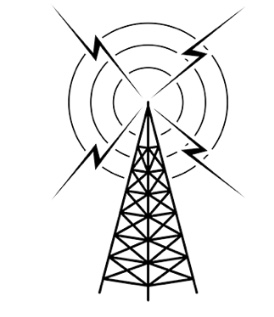Resources
Antennas

Building antennas is one of the most useful and cost-effective projects a ham can undertake. Getting some metal in the air for only a few bucks can bring you lots of satisfaction and leave you more money to buy more radios.
- 2-meter Quarter-wave vertical. Want to build a 2 Meter antenna that works great that costs just a few bucks? Check out the video.
- 2-meter / 440 dipole. Here is a dual band antenna that you install as a vertical or horizontally polarized antenna. Check out the video.
- 2-meter 'Slim Jim' for 300-ohm twinlead. Got some old TV flat lined in your garage that you've been thinking of throwing away? You could build a J-pole antenna for 2 meters that has some decent gain over the rubber ducky antenna that came with your HT. There are lots of versions of this antenna on the web. Some even use copper piping and are very durable. Here's the link
- Dual-band VHF/UHF 'Slim Jim'. This is another version of the 'Slim Jim' that also works on 440. Here's the link.
- Dipole antennas. Check out this ARRL link on how to build dipole antennas.
- 10-meter dipole. The Technician Class license gives you some privileges on the 10-meter band. Check out the video.
- Multiband dipole antennas. Here is a YouTube video that compares several types of dipole antennas. If you plan on buying or building a dipole antenna, this video is a must-see.
- 40-meter inverted-V antenna. Here is a YouTube video on this subject.
- 80-meter vertical homebrew. Want to homebrew a portable 80-meter vertical? Check out the video.
- Copper vs Aluminum Antenna Wire. Which is better Copper or Aluminum? Check out the video.
- How to use Hamsticks in different ways for use on the HF bands in Ham Radio. Here is how to use a Hamstick? Check out the video.
Radio programming
- How to program a Baofeng UV-5R Radio for both Simplex and Repeater operation
- Yaesu FT-60 operating manual
- Programming the Yaesu FT-60 to talk around "simplex" mode
- Yaesu FT-857D operating manual
- Yaesu FT-4XR operating manual
- MARS - CAP Mod
Technical notes
- What is Talk Around or Simplex mode
- Eye Warn 1
- EYE Warn 2
- Utah Division of Emergency Management Amateur Radio Volunteers
- License renewal instructions
- Everything you wanted to know about COAX
- What is Common Mode Current and what can you do about it
Other
- Installing Anderson Powerpole connectors. See this video on how to install Anderson Powerpole connectors.
- Dummy load. See this video on how to build a 50 ohm dummy load.
- Transistor history. See this video History of the Transistor.